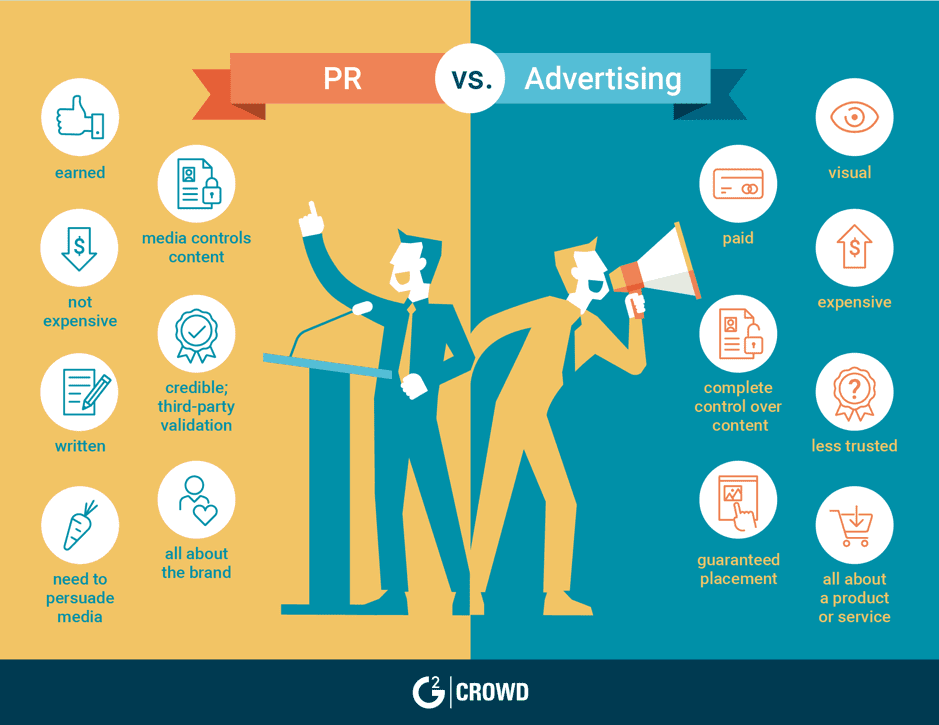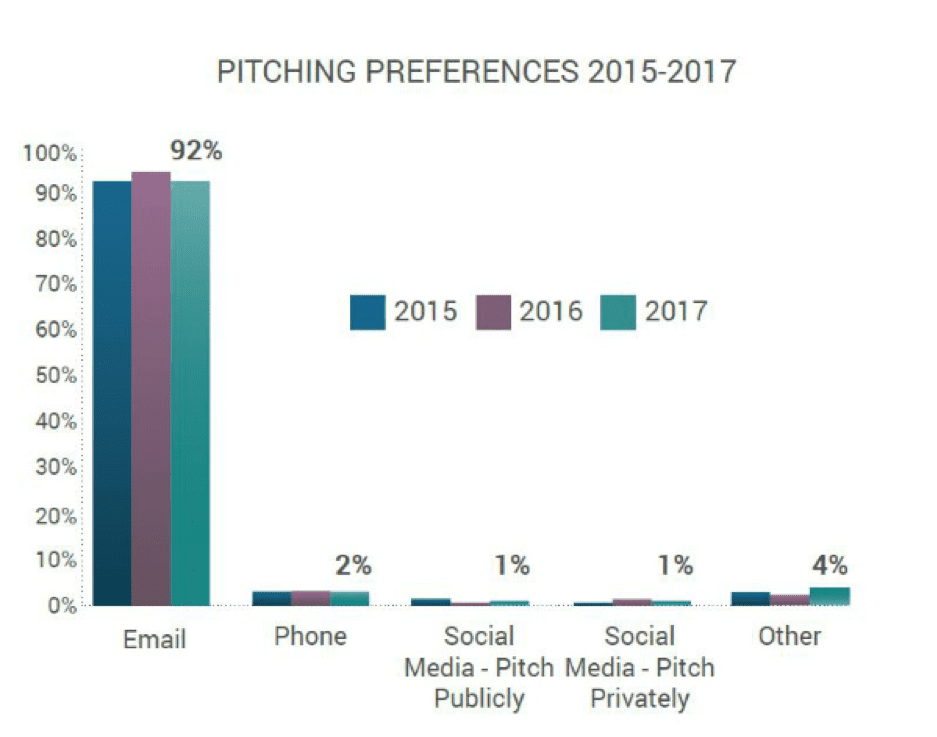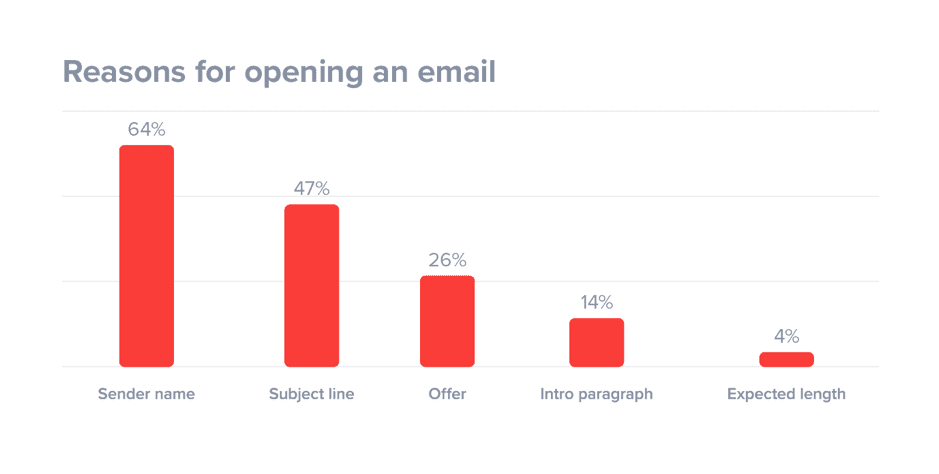PR may seem like a throwback but it can still deliver if combined with new digital tactics
We’re in the midst of a digital revolution, a golden age for tech innovation and disruption in virtually every industry. It's perhaps nowhere near as pronounced as it is in the marketing and advertising spheres.
Outbound is out while inbound is in. Direct mail has been replaced by email. Social media has, in many ways, replaced socializing itself. It’s easy to think that 'old' means ineffective and outdated.
But that’s a massive oversimplification.
Download our Free Resource – Email marketing trends 2019
In 2019, email marketing remains one the most effective techniques for digital marketers, so keeping up-to-date with the latest trends, best practice techniques, and technologies for email marketing remains extremely important.
Access the
Take public relations, for example. It might seem like a throwback to a different time, but that doesn’t make it any less powerful today. PR can still deliver. The trick is to combine it seamlessly with new digital tactics and channels, like email.
But let’s not put the cart before the horse. Before diving into using cold email outreach to get more PR mentions, let’s make sure we’re all clear on exactly what PR means, and why it’s still a very big deal.
Public relations
It might sound like something more akin to Mad Men than modern mainstream media, but PR is still very much a part of a well-rounded business strategy.
There's marketing and advertising, and then there’s public relations. If you want maximum reach and impact, you need them all.
But how does PR differ from advertising?
- PR is typically earned, not purchased.
- PR tends to be more credible than a paid ad.
- The content and placement are controlled by the media, not the company or brand.
Advertising is paying for a large billboard in an area with a lot of foot traffic or running a Facebook Ads campaign. PR is convincing the local newspaper to write a story on your two founders and their commitment to the community.
As its name implies, PR has to do with the public’s relationship with you and your brand. Is it positive? Negative? What can be done to maintain the good vibes and diminish the bad ones?
"PR is the maintenance of a business’ or individual’s positive reputation through earned and unpaid communications with the public. These communications can be proactive, positive stories or can be crisis management responses when the reputation is threatened." - Public Relations Society of America
Why it matters
For starters, PR matters because it’s unpaid media attention. PR is seen as a credible and reliable source by the general public. Consumers have grown cynical and suspicious of ads and paid promotion. It’s harder – though certainly not impossible – to get through to them that way.
Next, a feel-good story or special event can attract a lot of media attention and that means a great deal of reach. More eyes > more leads > more sales.
Finally, PR is considerably more cost-effective than paid ads are. It’s free for all intents and purposes.
Public relations includes press releases, special events and networking.
It also includes a healthy dose of pitching to various media outlets about news, events, announcements and stories that would be of interest to their audience. Roughly 73% of journalists go looking for interesting and relevant press releases, so you need to be sending them out.
But that also means 27% of journalists are not actively looking. You need to go to them to get your stories out there.
That's where cold email outreach can supercharge your efforts.
Playing the PR game
Your brand has stories to tell: upcoming events, new product launches, charity initiatives, expansion, sponsorship, company news, and more.
It’s the job of the PR specialist to make them available.
Writing and submitting to press release sites like PR.com and PR Log (free), or PR Newswire and PRWeb (paid) is a good place to start. But an active approach that includes cold outreach is going to separate the good from the great campaigns.
Identify worthy targets
It’s never been easier to identify and locate the journalists, writers, and creators covering a particular topic or niche. Tools like BuzzSumo or Ahrefs Content Explorer can quickly find the most popular online content for any keyword or topic. You can then create a list of the sites and creators making waves in your industry or niche.
Paid solutions like Muck Rack or TrendKite can provide vast media databases with names, email addresses, and interests.
Either way, you’ll soon have a lengthy list of targets to contact and they overwhelmingly want you to pitch to them by email.
So all that’s left to do is
craft the perfect email pitch. Easy.
The perfect pitch
Fundamentally, an email pitch is still just an email. You should follow all best practices in regards to deliverability and personalization.
Keep it short. Be professional but authentic. Use your real name. Show them that you’ve taken the time to research their work and preferred subject areas. Take some time with your subject line (47% of people decide whether to open an email based on the subject line alone).
Beyond that, you need to lean in on the fact that you’re pitching a story. A good pitch is equal parts fact and finesse, art and science. The best ones include a compelling hook, a straightforward call-to-action and powerful value prop.
The hook
Consider the number of emails you receive each day. Dozens, right? A journalist receives even more, so you need a fantastic subject line to get them to open yours and a riveting hook to reel them in.
Why are you contacting them? Why today?
A good pitch is rooted in either a news peg – connected in a meaningful way to a current or trending story – or a time peg – connected to an upcoming event, anniversary, or date.
Make that explicitly clear in the first few sentences. Don’t waste their time.
The call-to-action
This may seem obvious, but in a perfect world, what do you want the recipient to do? Tell them explicitly and in as few words as possible.
Do you want them to call you to chat? Visit the head office? Interview the founder or CEO? Research a particular trend or change in the industry? Something else?
Give them the details they need to do whatever it is you want them to do with as little effort as possible. Leave it vague or ambiguous, and they’ve already moved on to the next pitch.
The value proposition
The hook and call-to-action are important. The value proposition is make-or-break.
Why should they take the time and effort to pursue this particular pitch? How does it benefit them, their publication/site, and their readers? If you can’t answer that question, your pitch is DOA.
Connect your pitch to the bigger picture. It matters – to them and their readers – and here’s why.
Follow-up
An often-ignored element of successful emailing – pitching or otherwise – is the follow-up. A journalist may not respond to your email because he or she is not interested. But they might not respond for a variety of other reasons: too busy, forgot, accidentally erased, didn’t see it and so on.
Don’t lose valuable PR exposure because you gave up after one unanswered message. Use an email solution like Mailshake and set up automatic follow-ups after a day or two. It’s the only way to know for sure.
A second, third, or even fourth email is another chance to get a positive response.
A comprehensive PR plan should work alongside your marketing and advertising. Write and share press releases, and harness the power of cold email outreach to spread your net even wider.
Tell your story.
Ryan Farley is the Co-founder of
LawnStarter Lawn Care, an online and mobile platform that connects homeowners with lawn care professionals for care-free and efficient services.










